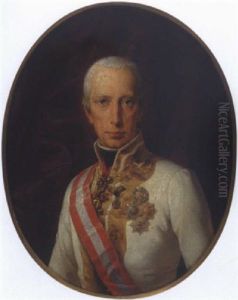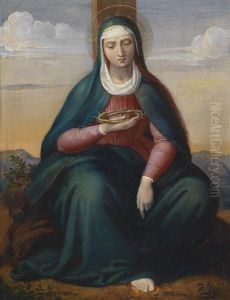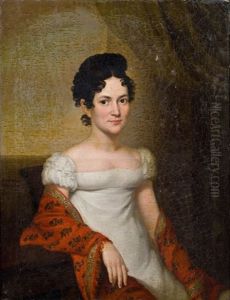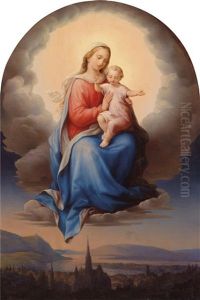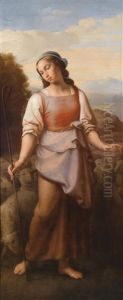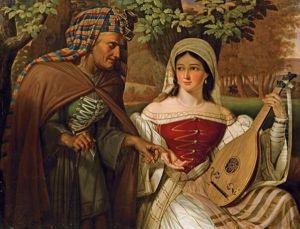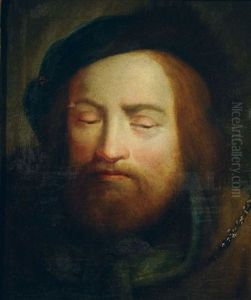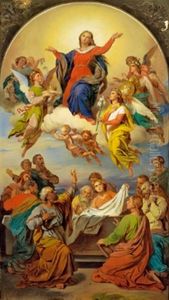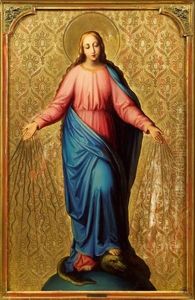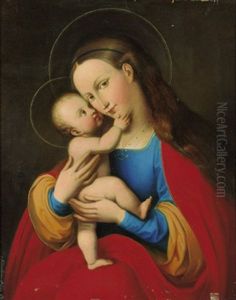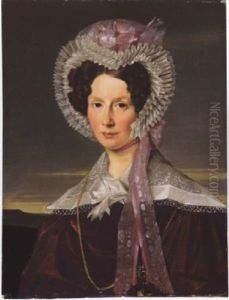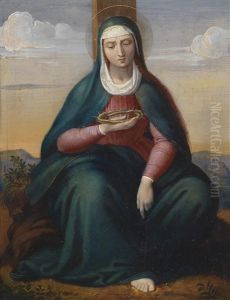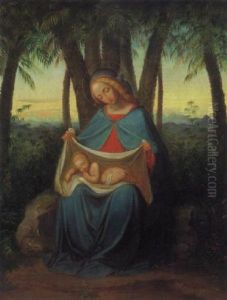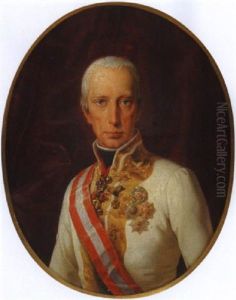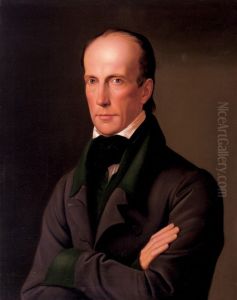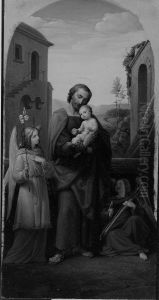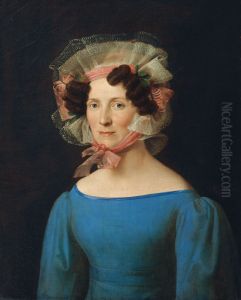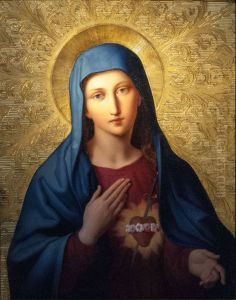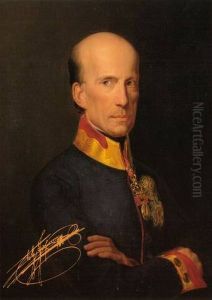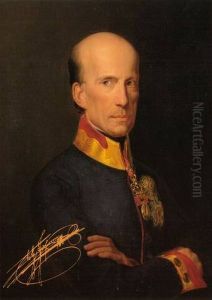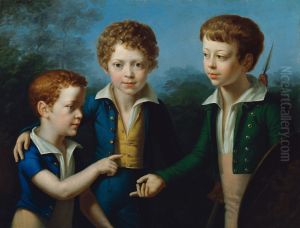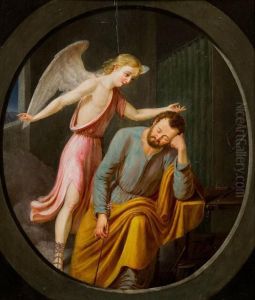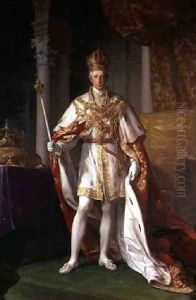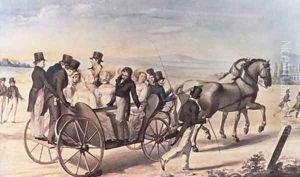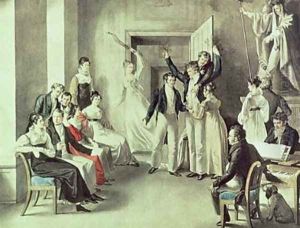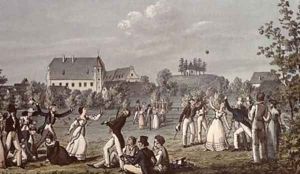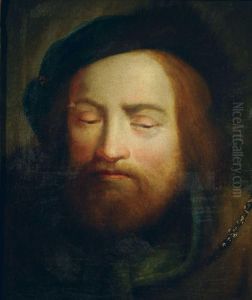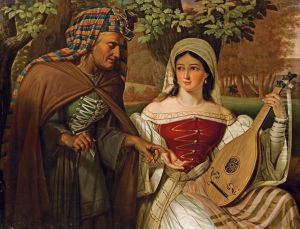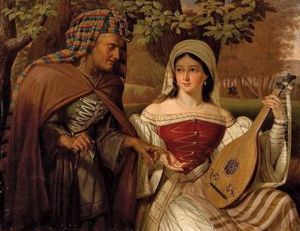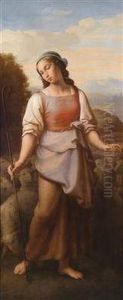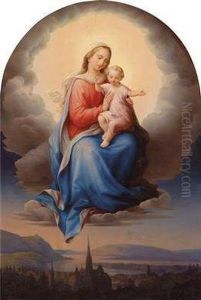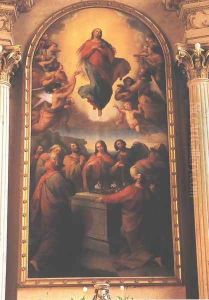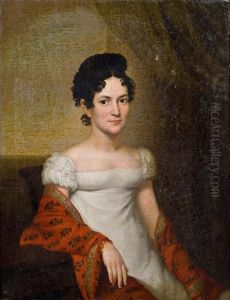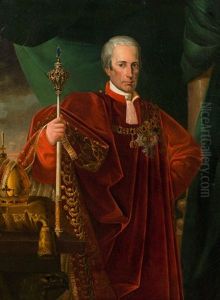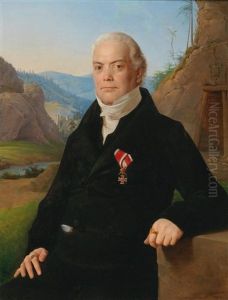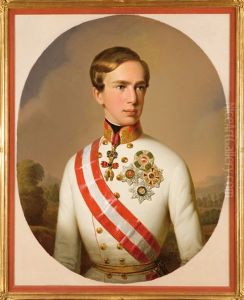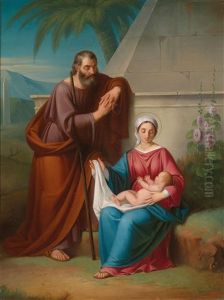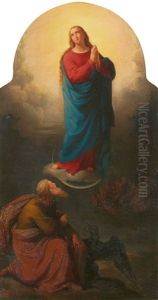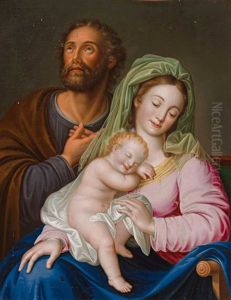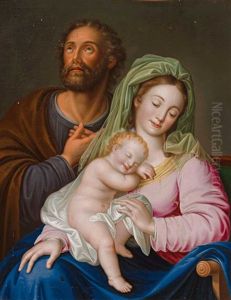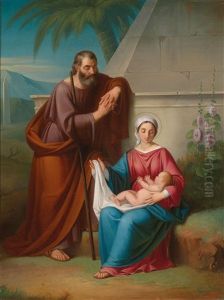Leopold Kupelwieser Paintings
Leopold Kupelwieser was an Austrian painter, born on October 17, 1796, in Markt Piesting, Lower Austria. He was a prominent figure in the early 19th-century Austrian art scene, known for his contributions to religious and historical painting. Kupelwieser’s artistic journey began under the guidance of his father, Johann Baptist Kupelwieser, who was also an artist. His formal education in art commenced at the Academy of Fine Arts Vienna, where he was significantly influenced by the neoclassical style, particularly through the teachings of Heinrich Füger.
During his time at the Academy, Kupelwieser developed a deep interest in historical and mythological themes, which became evident in his early works. His talent earned him several accolades, including the coveted Rome Prize, which allowed him to study in Italy. This period was crucial for Kupelwieser as he was exposed to the works of the Renaissance masters, which had a lasting impact on his style and approach to art.
Upon his return to Austria, Kupelwieser received commissions from various churches and institutions, solidifying his reputation as a skilled painter of religious themes. Among his most notable works are the frescoes in the chapel of St. John Nepomuk in Vienna and the altarpiece for the Piarist Church in Krems. His style evolved over the years, incorporating elements of the Romantic movement, evident in his later works’ emotional depth and use of color.
Kupelwieser’s contributions to Austrian art were not limited to his paintings. He was also a respected teacher, joining the faculty at the Academy of Fine Arts Vienna in 1837, where he influenced a new generation of artists until his retirement in 1849. His teaching emphasized the importance of historical accuracy and the study of classical art, principles that shaped the artistic outlook of his students.
Leopold Kupelwieser’s legacy extends beyond his artworks. He was also the father of Franz Kupelwieser, a notable composer, indicating that the artistic talent ran deeply in the family. Kupelwieser passed away on March 17, 1862, in Vienna, leaving behind a body of work that remains appreciated for its contribution to the development of Austrian art in the 19th century. His life and work reflect the transition from Neoclassicism to Romanticism in Austrian art, making him a pivotal figure in the country’s artistic history.
